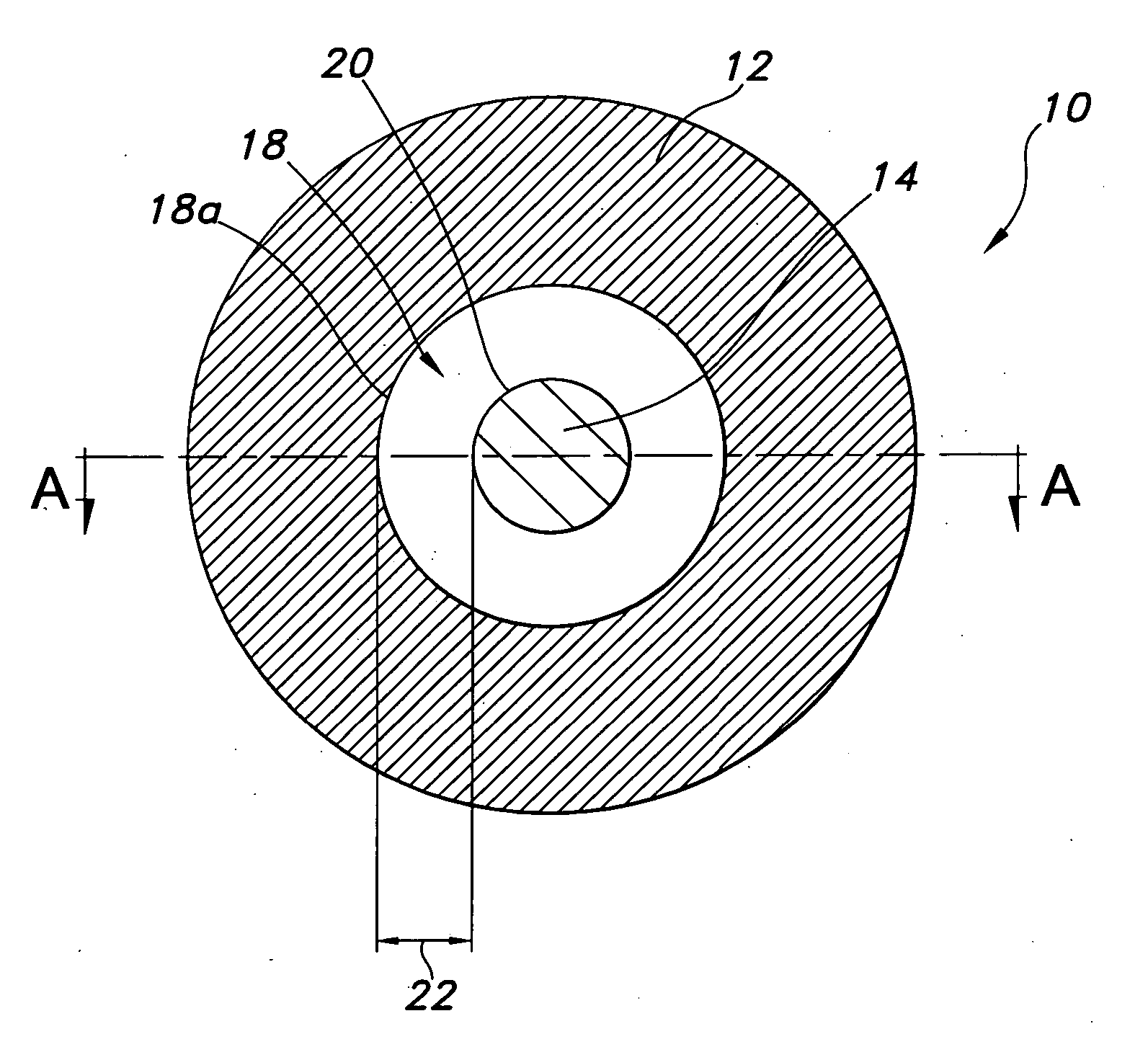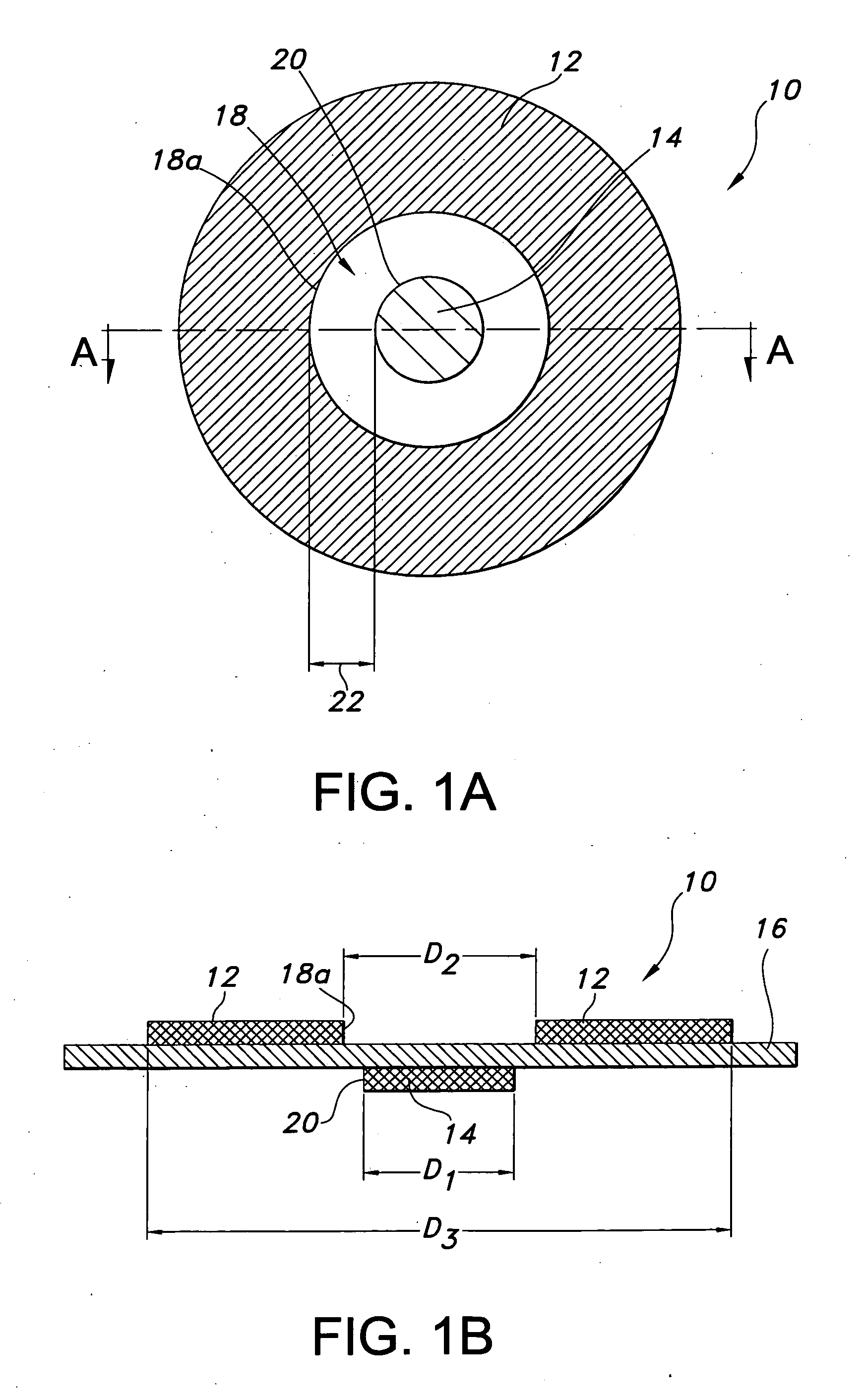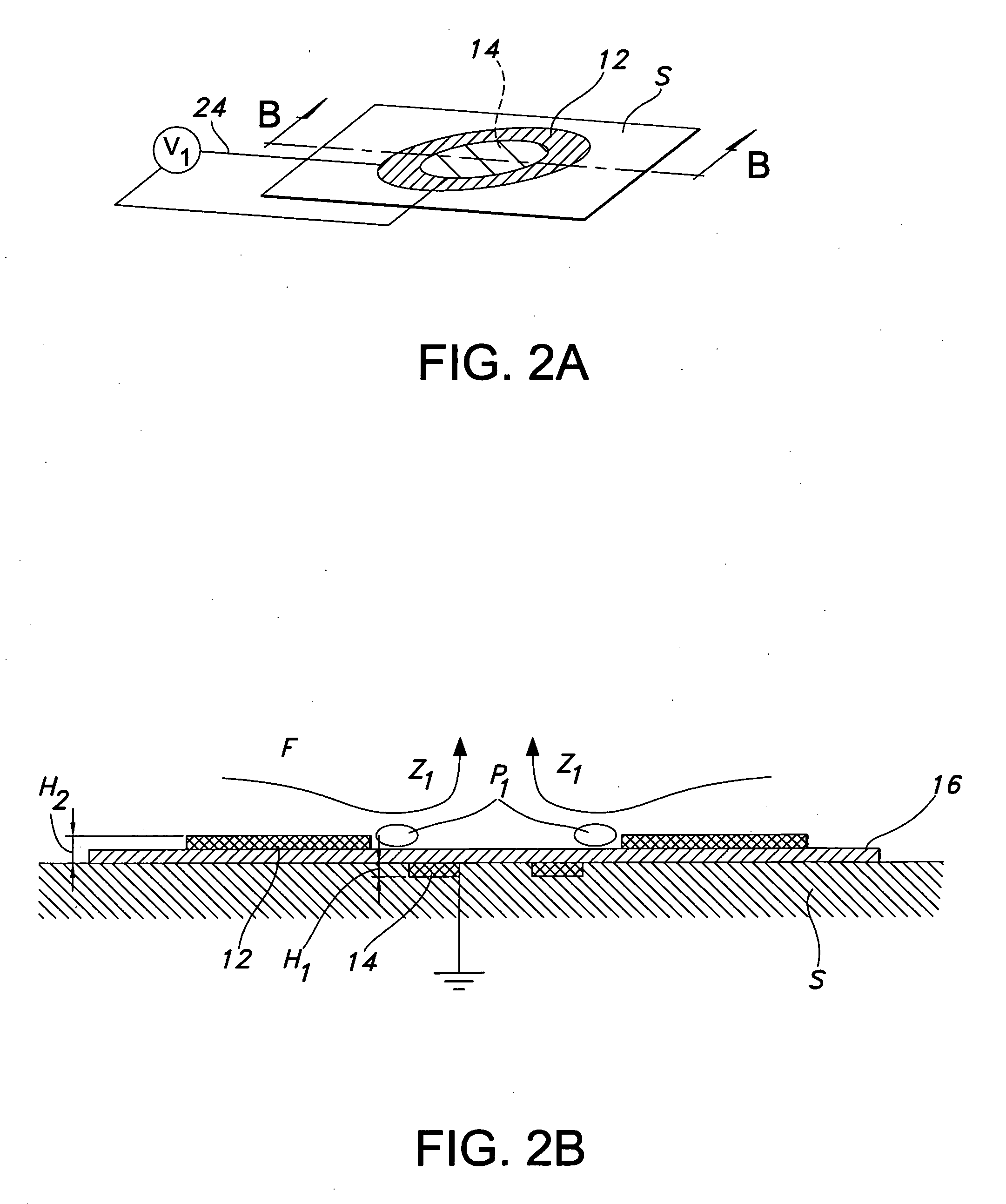Plasma actuator
a technology of actuators and plasma, applied in the direction of positive displacement liquid engines, air-flow influencers, machines/engines, etc., can solve the problem of fluid flow away from the actuator
- Summary
- Abstract
- Description
- Claims
- Application Information
AI Technical Summary
Benefits of technology
Problems solved by technology
Method used
Image
Examples
example
[0037] Plasma actuators were created using a conductive copper tape material. One actuator was created in the form of an array of annular actuators, while the other was created in a linear fashion. A 0.025″ thick alumina ceramic slab was used as the dielectric for a quiescent flow and flat plate boundary layer experiment, while KAPTON was used as the dielectric for a cylinder flow measurement.
[0038] The diameters of exposed and embedded conductors of the annular plasma synthetic jet actuator (“PSJA”) tested were 1″ and 0.5″ respectively, with either no gap or a 0.04″-0.08″ overlap. The dimensions of the linear synthetic jet actuator (“L-PSJA”) used in both quiescent flow and flat plate experiments were chosen to match the PSJA, and the width of the exposed conductors and embedded conductor of the L-PSJA were 0.25″ and 0.5″ respectively, with no gap and a spanwise length of around 3.5″. For quiescent flow measurements on the linear actuator, the width of the exposed and embedded con...
PUM
 Login to View More
Login to View More Abstract
Description
Claims
Application Information
 Login to View More
Login to View More - R&D
- Intellectual Property
- Life Sciences
- Materials
- Tech Scout
- Unparalleled Data Quality
- Higher Quality Content
- 60% Fewer Hallucinations
Browse by: Latest US Patents, China's latest patents, Technical Efficacy Thesaurus, Application Domain, Technology Topic, Popular Technical Reports.
© 2025 PatSnap. All rights reserved.Legal|Privacy policy|Modern Slavery Act Transparency Statement|Sitemap|About US| Contact US: help@patsnap.com



